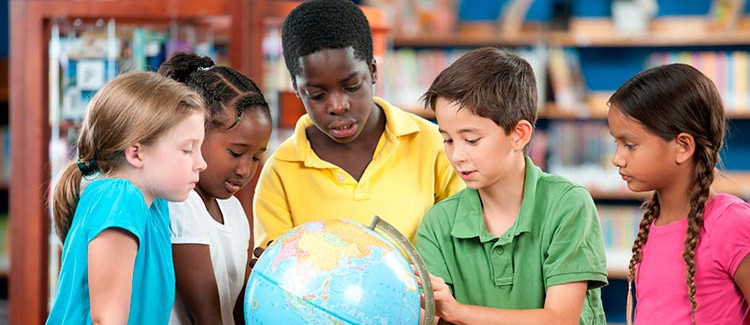Fostering a Culturally Responsive Classroom
Our great nation is fortunate to be enriched by so many cultural and religious traditions and backgrounds, and of course this means that our classrooms are also rich in diversity! Our country has always been home to many people with roots in various other countries, but we must ensure that our multicultural education goes beyond just celebrating this diversity a few times a year, on a few special occasions.

It is important that we strive to educate ourselves on other cultures, languages, and traditions, while helping to foster understanding and mutual respect. We felt that with the various holidays and traditions that come about this time of year, it would be a great time to share a few tips to help foster a culturally responsive classroom. You’re probably doing most of these things already, but it’s always a good thing to “check-in” every once and awhile!
One of the first components of culturally responsive instruction has to do with reflecting on how your own cultural conditioning is reflected in your teaching.
Add visuals to your instruction and around the classroom that represent racial and ethnic diversity. Along with this, be sure to stray away from those visuals that reinforce a specific long-held harmful stereotype. If you are unable to find any suitable photos, wait until you can hold an event where you invite families to take photos of the children in your classroom interacting with each other and each other’s families (be sure you have proper permission for this, too!)
Incorporate books with various multicultural representations and varying perspectives into classroom readings. This does not mean to discard mainstream books. It’s important to share these as well as the multicultural books, and hold conversations with your students about what they learned from each text.
Explore and discuss themes that are common among all cultures. Have discussions and share lessons about music, family, friendship, etc, and discuss the similarities, as well as any differences. This is a great way to allow students to take pride in their culture or family traditions, and share about them with the rest of their classmates.
Support ELL learners and their families with materials in their first language. If your school does not offer an interpretor, go to your district for further help. You can even see if any volunteers in the school community would be able to assist.
Ensure that you do not schedule any exams or projects to be do on any cultural or religious holidays.

Celebrating holidays in the classroom:
Recognize various talents and accomplishments that stray from the norm when focusing on people. Do not limit your celebration to just famous leaders or heroes, and reach beyond to discuss little-known role models who are historical.
Consult more than one research source, and do not rely on one student in your class to be the sole resource for finding out about a specific culture or celebration. Every family is different, and everyone has their own experiences. One student may not be an accurate representation of the entire culture.
Make the celebration more than just food, music, and popular icons. For example, there is so much more to St. Patrick’s Day than leprechauns, four leaf clovers, and wearing green. Make this an opportunity to learn more about the Irish people and their history.
Plan ahead of time. Don’t wait until the day of the celebration to bring it up! If the topic has to do with specific students represented in your classroom, reach out to their families to see if they would be willing to come in and share stories, traditions or family history with the class. You could also use them as a valuable resource for ideas!

The American Federation of Teachers, along with some collaboration from other groups, has outlined a few guidelines to help teachers when it comes to discussing and learning about religious holidays and traditions. It’s important to understand your purpose for bringing up religion. Many teachers do so to foster tolerance for other beliefs and faiths.
Have an approach that is academic, and not devotional.
Focus on the awareness of religions, rather than the acceptance of any one religion.
Sponsor study about religion, not the practice of religion.
Expose students to a diversity of religious views, and do not impose any particular view.
Educate about all religions - do not promote or denigrate any religion.
Inform students about various beliefs, rather than conform students to any particular belief.
The complete guide and a more comprehensive list of recommendations is available at the First Amendment Website.
Ultimately, teachers strive to maintain an educational environment that is safe and respectful of all cultures, backgrounds, and beliefs where students can thrive and learn. One of the most important aspects of this goal is to ensure that you are providing a culturally responsive classroom, and then continue to follow up and reflect on your practice to ensure that you maintain this environment.
We hope that you found this blog helpful! Please share any other tips that you have in the comments below. We’d love to hear from you and help spread best practice ideals to all educators!

If you have any questions, email us at info@pledgecents.com.





